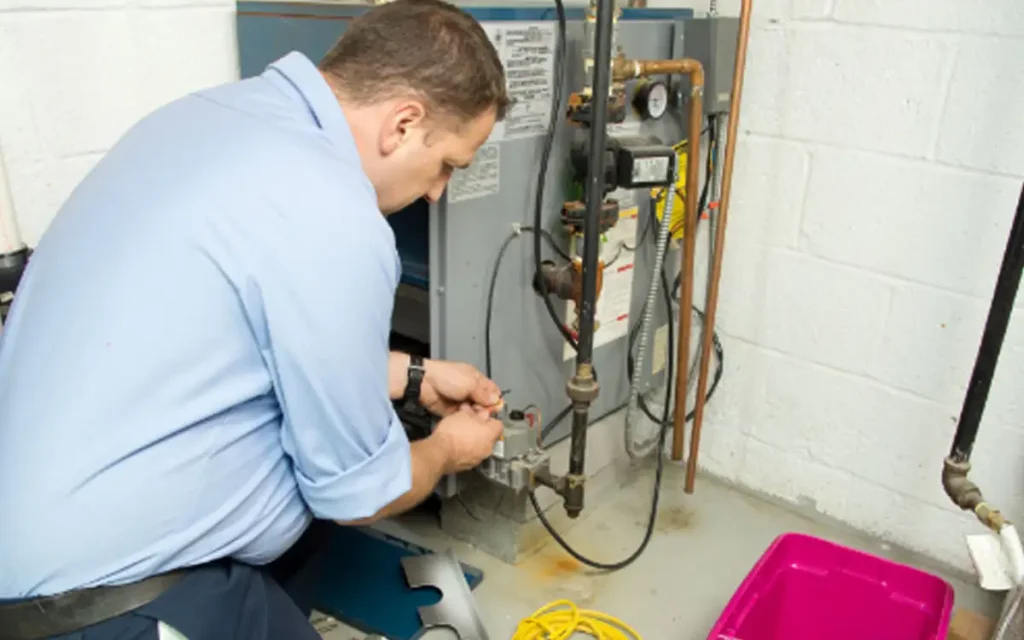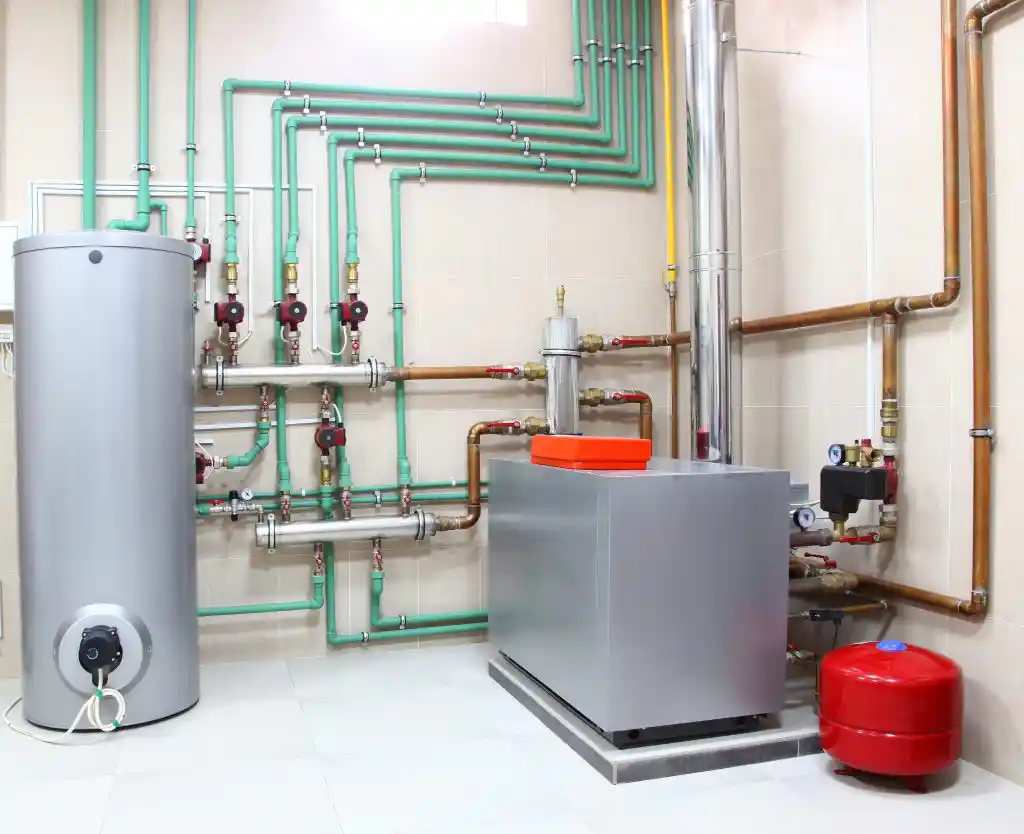If you’re experiencing issues with your tankless water heater, you’ve come to the right place. In this comprehensive Ultimate Tankless Water Heater Repair guide, The Pro Plumbing equip you with troubleshooting tips and tricks to help you diagnose and fix common problems. From no hot water to error codes, we’ll cover it all.
Tankless water heaters are known for their energy efficiency and endless hot water supply, but like any appliance, they can encounter issues. Don’t worry, though – with the right knowledge and guidance, you can tackle these problems with confidence. Let’s dive in and get your tankless water heater running smoothly again!
Common Tankless Water Heater Problems
Following are the common tankless water heater problems:
A. No Hot Water
One of the most frustrating issues with a tankless water heater is when you turn on the tap and there’s no hot water. This can be caused by various factors, such as a malfunctioning heating element, a tripped circuit breaker, or a problem with the gas supply. Troubleshooting steps may include checking the power source, inspecting the heating element, and ensuring proper gas flow.
B. Insufficient Hot Water
If you’re experiencing a lack of hot water or it’s not reaching the desired temperature, the issue could lie with the water flow rate or an undersized unit. Check if there are any obstructions in the water lines, clean the inlet filter, and consider increasing the flow rate if possible. Additionally, verify if the water heater’s capacity is suitable for your household’s hot water demands.
C. Fluctuating Water Temperature
Fluctuating water temperature can occur when there is an imbalance between the hot and cold water flow. It could be due to a faulty temperature sensor, a malfunctioning mixing valve, or issues with the water pressure. Inspecting and adjusting these components, as well as ensuring proper water flow, can help resolve this problem.
D. Water Leaks
Water leaks are a serious concern and should be addressed promptly. Leaks can occur from loose connections, damaged seals, or faulty valves. Inspect the water lines, fittings, and connections for any signs of leakage. Tighten loose connections or replace damaged components to fix the issue. If the leak persists, it’s advisable to seek professional assistance.
E. Strange Noises
Unusual noises coming from your tankless water heater can be a sign of a problem. Common causes include mineral buildup, a malfunctioning fan or motor, or high water pressure. Flushing the system to remove mineral deposits, cleaning or replacing faulty components, and adjusting the water pressure can help eliminate these noises. It’s important to address these issues promptly to prevent further damage and ensure the efficient operation of your water heater.
F. Error Codes
Tankless water heaters often have built-in error code systems to indicate specific problems. When an error code appears on the display panel, it provides valuable information for troubleshooting. Each manufacturer has its own set of error codes, so it’s crucial to refer to the user manual or contact the manufacturer for guidance. Error codes can indicate issues such as sensor malfunctions, gas or airflow problems, or ignition failures. Understanding the error codes and following the recommended steps can help you diagnose and resolve the problem effectively.

Troubleshooting Tips for Tankless Water Heater Repairs
A. Checking Power and Gas Supply
When troubleshooting your tankless water heater, start by ensuring that it has a stable power supply. Check if the circuit breaker is tripped or if there’s a blown fuse. Additionally, verify that the gas supply is turned on and that the pilot light (if applicable) is lit. If there are any issues with the power or gas supply, address them accordingly.
B. Flushing the System
Mineral buildup can impede the performance of your tankless water heater. Flushing the system regularly helps remove these deposits and maintain efficiency. Follow the manufacturer’s instructions to flush the unit using a descaling solution or vinegar. Flushing the system will improve heat transfer and prevent clogs in the heat exchanger.
C. Cleaning the Air Intake Filter
The air intake filter prevents dust and debris from entering the water heater. Over time, it can become dirty and affect the unit’s performance. Remove the filter and clean it according to the manufacturer’s instructions. Regularly cleaning the air intake filter ensures proper airflow and prevents issues caused by restricted airflow.
D. Adjusting Temperature Settings
If you’re experiencing water that’s too hot or not hot enough, adjusting the temperature settings may solve the problem. Refer to the user manual to locate the temperature controls on your tankless water heater. Make incremental adjustments until you reach the desired temperature. Keep in mind that drastic temperature changes can affect the unit’s performance and water flow.
E. Inspecting and Replacing Heating Elements
Faulty heating elements can lead to issues like insufficient hot water or fluctuating temperatures. Inspect the heating elements for signs of corrosion or damage. If necessary, replace the faulty heating elements with compatible replacements. Follow the manufacturer’s instructions and consider seeking professional help if you’re unsure about the replacement process.
Hiring a Professional or DIY Repairs?
A. When to Seek Professional Help
While it’s tempting to tackle tankless water heater repairs yourself, there are certain situations where it’s best to seek professional help. Consider hiring a professional if:
- Lack of Experience: If you’re unfamiliar with tankless water heater systems or lack experience in handling complex repairs, it’s wise to call in a professional. They have the expertise to identify and fix problems efficiently.
- Complex Issues: Some water heater problems require specialized knowledge and equipment. If you’re facing complex issues such as electrical faults, gas leaks, or major component malfunctions, it’s safer to let a professional handle the repair work.
- Manufacturer’s Warranty: If your tankless water heater is still covered by a manufacturer’s warranty, attempting repairs yourself might void the warranty. To avoid any unnecessary expenses or potential loss of coverage, consult a professional authorized by the manufacturer.
B. Safety Considerations for DIY Repairs
If you decide to take on tankless water heater repairs yourself, prioritize safety by following these considerations:
- Turn off Power and Water: Before starting any repair work, shut off the power supply to the water heater at the circuit breaker and turn off the water supply to prevent accidents and damage.
- Read the Manual: Familiarize yourself with the water heater’s manual, as it contains essential safety guidelines, troubleshooting tips, and instructions for DIY repairs specific to your model.
- Use Proper Tools and Equipment: Ensure you have the necessary tools and safety equipment to perform the repairs correctly. Improper tools or inadequate safety gear can lead to accidents or further damage.
- Know Your Limitations: If you encounter a problem beyond your skill level or the repair process becomes too complex, don’t hesitate to call a professional. It’s better to prioritize your safety and avoid causing further damage.
Preventive Maintenance Tips for Long-lasting Performance
A. Flushing the System Annually
One crucial preventive maintenance tip for ensuring the long-lasting performance of your tankless water heater is to flush the system annually. Over time, mineral deposits and sediment can accumulate inside the heater, leading to reduced efficiency and potential damage. Flushing the system helps remove these deposits and ensures optimal performance.
To flush the system, begin by turning off the power and water supply to the heater. Next, attach a hose to the drain valve and place the other end in a suitable drainage area. Open the drain valve and allow the water to flow out until it runs clear, indicating that the sediment and mineral buildup have been flushed out. Finally, close the drain valve, remove the hose, and restore power and water supply to the heater.
B. Regular Inspection of Components
Performing regular inspections of your tankless water heater’s components is another important preventive maintenance step. Check for any signs of leaks, loose connections, or damaged parts. Inspect the heat exchanger, combustion chamber, and venting system for any blockages or debris that may hinder the heater’s performance.
C. Removing Mineral Buildup
Mineral buildup can occur in areas with hard water. This buildup can lead to reduced efficiency and potential damage to the heater. To remove mineral deposits, use a descaling solution recommended by the manufacturer. Follow the instructions carefully to ensure safe and effective descaling of the heater. Regular descaling will help maintain the heater’s performance and extend its lifespan.
D. Checking Pressure Relief Valve
The pressure relief valve is a safety feature that releases excess pressure in the tankless water heater. It is crucial to check this valve regularly to ensure it is functioning correctly. Test the pressure relief valve by lifting the lever gently and allowing it to snap back into place. If the valve does not release any water or if it continues to leak after closing, it may need to be replaced. A faulty pressure relief valve can lead to a dangerous increase in pressure within the heater, so prompt action is essential.

VI. Conclusion
By following the troubleshooting and preventive maintenance tips provided in this ultimate tankless water heater repair guide , you can save yourself from unnecessary headaches and expenses. Regular flushing of the system, inspecting components, removing mineral buildup, and checking the pressure relief valve will ensure that your tankless water heater performs optimally and lasts for a long time. Remember, taking proactive measures and addressing issues promptly will keep your water heater running smoothly and efficiently.

